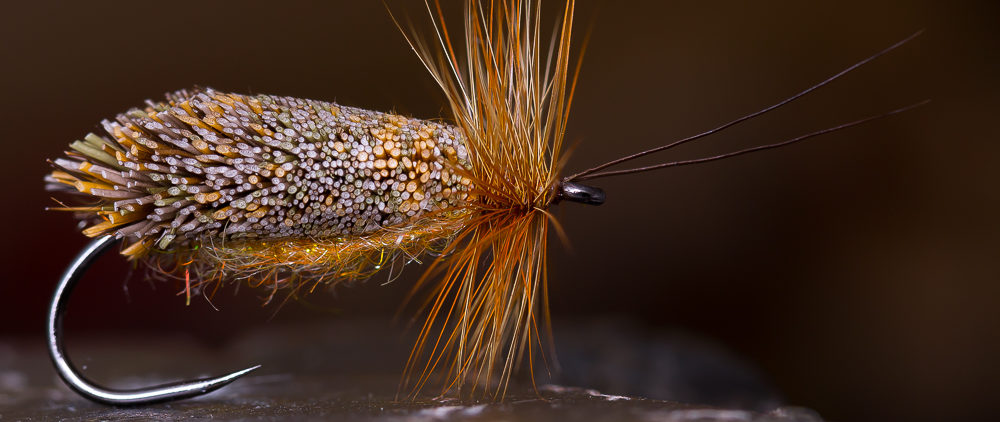
The famous shrimp fly „Pattegrisen“ is one of the most popular seatrout patterns of the last years for the fly fishermen at the Baltic sea. It’s a very large fly with a great movement in the water. The key-material are Rooster Spey Hackles from Whiting dyed in the colour salmon. The long soft fibres pulsate, when retrieving with some stops . Lovely!
But there’s a little problem…. the original Whiting Rooster Spey Hackles are expansive. Some years ago you payed about 35,- € for a bronze grade cape, now about 80,- to 90,- €!
That’s the reason I tied the „Poor Mans Pattegrisen“. This pattern is much cheaper, easy to tie and, believe me, it looks really nice in the water! The main ingredient are Whiting HEN Spey Hackles dyed in salmon. They are much cheaper and softer as rooster hackles, but not as long as the original.
Just give the Poor Mans Pattegrisen a try, maybe also in different colours, it’s worth it!
Materials:
- Hook: Partridge CS 54 # 6
- Weight: Lead Wire
- Feeler: Whiting Hen Spey Hackles, Fluo Fibre, Krinkle Mirror Flash
- Ribbing: Mono
- Eyes: Black Shrimp Eyes
- Body: Whiting Hen Spey Hackles, Spectra Dubbing
- Roof: Whiting Hen Spey Hackles
- Hot Spot: UTC Thread fluo. pink

Wind some lead wire around the front part of the hook shank and secure it with super glue.

Tie in a spey hackle with the tip first.

Wind the hackle towards the hook eye and catch it with your tying thread.

Tie some strands of fluo fibre on each side of the feeler.

Tie in a strand of krinkle mirror flash on each side and form a little dubbing ball.

Tie in the shrimp eyes. The dubbing ball helps to split the eyes nicely.

Tie in a piece of mono and a spey hackle.

Dub the first part of the body, wind the spey hackle around it and catch it with your thread.

Tie in another spey hackle and dub the rest of the body.

Wind the hackle around the dubbed body and secure it with your thread, then rib the body with the mono to make it strong and durable.

Brush the fly with your velcro brush, so the dubbing fibres are mixed with the hackle fibres.

Tie in another spey hackle…

… wind it around and secure it with your thread.

Take 3-4 spey hackle and equalize the length.

Tie in the spey hackles as a roof of the fly.

If you want, you can create a little hot spot with fluo tying thread.

Varnish the head or put some uv-resin on it. Voilà! The „Poor Mans Pattegrisen“!
tight lines
Holger Lachmann

















































































































































































